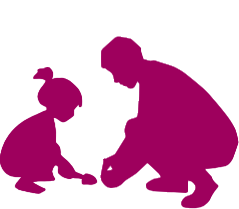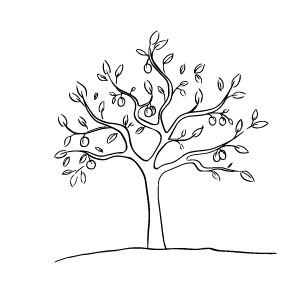When I was five, I remember dancing. For me, dancing was a primitive release, and I remember the liberation and the joy – the pure and intense joy – that it brought (and still brings). That I wasn’t any good was inconsequential: it was the experience, the deep and profound connection to music and movement that made me feel graceful and beautiful and made my heartbeat to a new rhythm… That is the beauty of my autism.
When I was seven, I knew – with a clarity that has carried me through my whole life – that I wanted to spend my life immersed in history. Medieval history to be exact. It was – and remains – my passion, one of my best friends, my intellectual release, my delight, and my pleasure. It relaxes me and excites me in equal measure, it invigorates me and soothes my soul… That is the beauty of my autism.
When I was eight, I recited Wordsworth poetry to my class for show and tell. I don’t think I really understood the meaning, but his words took me away, the minute details of a vivid landscape painted indelibly in my mind’s eye… That is the beauty of my autism.
When I was thirteen, I learnt the harp because the music was so haunting and ethereal it felt like the notes could reach inside me and lull my frantic mind. I had no talent for it, but the feeling of caressing the strings, the comforting weight of the instrument, and the gentle melodies appeased my fractured emotions… That is the beauty of my autism.
When I was fifteen, I was a budding thespian (I can still quote Prospero’s monologue from The Tempest). Shakespeare transported me to another place, another time, with language that was carefully – and magnificently – crafted, and meaning that could be studied, probed, explored without censure… That is the beauty of my autism.
When I was in my twenties, I completed my PhD. Far from finding it stressful, the thrill of being totally immersed in my passion day in, day out, filled me with great joy, and peace, and satisfaction… That is the beauty of my autism.
Now I am in my thirties, and I help others to see the beauty in their – and their children’s – autism… That is the beauty of my autism.
Of course, there are challenges, and moments of self-doubt or isolation or exclusion, and there always have been.
At high school, I slept little and read compulsively to escape from the bullying and isolation and loneliness, from the social burden of my difference. Reading was escapism, it helped me to distract myself from peers who didn’t accept me and who actively disliked and shunned me. A teenager’s version of imaginary friends, if you will.
My parents took me to doctor after doctor to try and explain the paralyzing physical illness I experienced every morning before school, the crippling sickness that struck me each day. I now know it is my anxiety, which still manifests bodily.
As an adult, I have used alcohol as a social crutch to allow me to function socially. And I accept the post-socialising migraine as just a part of life.
I wear aromatherapy jewellery to allow me to function without retching at other people’s smells, their perfume or aftershave, the scent of banana or onion or coffee on their breath. I am that woman who can’t control her gag at your cigarette smoke, who has to fight down vomit at the smell of your body odour, who avoids freshly cut grass.
I have developed techniques that help me control my anxiety if I am running late – or someone else is. But my heart still beats too fast, and I still feel suffocated by the panic I feel when I just might be late.
I now recognise the tingling feeling like electricity in my fingertips as a need to stim, to flick or flap, and I indulge and feel better. I make lists compulsively to help me feel like I am in control. But, then, sometimes I can’t ‘do’ because I need to ‘list’. Sometimes my listing is so obsessive, it controls me.
But my autism is beautiful, because I am beautiful, and my autism is me. I know it’s not the usual or ‘done’ thing for a woman in her thirties to laud her own beauty, but that self-knowledge has been hard-earned and long denied, and my well-being needs that kind of self-acceptance.
And there, finally, is that word: acceptance. Autism acceptance – which we celebrate in April – is not about denying the challenges. But… it requires you to look for – and then to see, truly and genuinely – the beauty and joy of and in autism. Because it is there to see if you care to look.
Useful Resources
If you are new to autism acceptance or would like to read other autistic authors on autism acceptance, here are some excellent resources I recommend:
Respectfully Connected
Hello Michelle Swan
Neurocosmopolitalism
Thinking Autism Guide
Jeanette Purkins
Autism Acceptance Month
A Diary of a Mum
For more specific examples on acceptance, try:
Christine Motokane’s Mental Health and Autism: Why Acceptance Matters
Steve Silberman, Why Autism Awareness’ is Not Enough: Steve Silberman (and friends) explain ‘Autism Acceptance
You can explore other insights into the many joys that come with living authentically autistically:
Emma’s Hope Book, Living Being Autistic, How we Communicate
Jeanette Purkis, We Are Family
Just Stimming, The Obsessive Joy of Autism
Briannon Lee, Connections with Autistic People
If you’d like some advice about parenting your autistic children with acceptance, have a look at:
Antisocial, by Michelle Sutton
I Don’t Need Fixing Thanks! By Jeanette Purkis
Eleven Ways You Can Make Your Autistic Child’s Easier, by Shannon Des Roches Rosa
Autism is Not a Shell Surrounding a ‘Normal’ Child at TPGA, by Maxfield Sparrow at Unstrange Mind.











Fantastic read. Thanks Melanie.
This is beautiful. Thank you Melanie. Gave me a lot to think ?